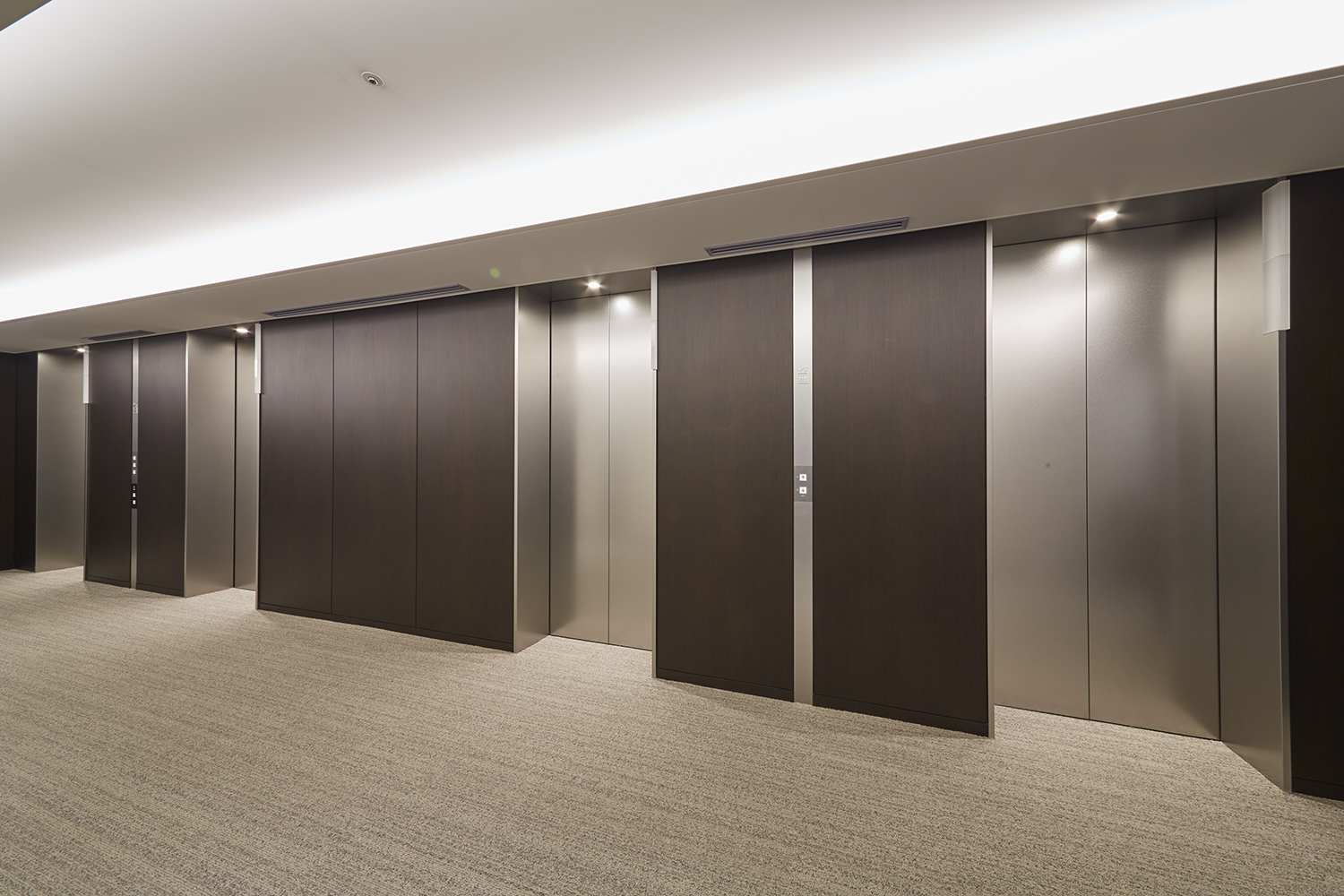
During the last webinar, How Architectural Finishes Create a Total Transformation, we dove into four main topics of architectural surface films:
- Characteristics of architectural finishes
- Manufacturing, construction, installation
- Substrates
- Cleaning and maintenance
To recap, let’s begin with a thorough review of the vast options of architectural finishes in the market today, identified their appropriate uses, and defined their expected performance characteristics.
Characteristics of Architectural Surfaces
What Are Architectural Finishes?
Architectural finishes, also known as architectural film, are a self-adhesive finishing solution that enables architects, designers, and building owners to transform any surface at a fraction of the cost of a remodel or replacement.
They can be applied to almost any surface imaginable: walls, ceilings, pillars, elevators, desks, cabinets, facades, and more. And, drawing from countless inspirations in architecture, design, nature, and the elements, they come in limitless styles: natural wood, marble, stone, leather, and everything in-between.
Why Architectural Finishes?
One of the reasons why your building may need an architectural surface film is for natural materials such as wood and stone. Our cost-friendly finishes are sustainable, meaning there will be no negative impact on the environment once you dispose of them. Another reason to invest in architectural finishes is that it extends the life of substrates. Architects like to use architectural surface films where there are restrictions in budget and material availability. In other words, the natural resource is not available in the timeframe it’s needed for, so they defer to architectural surface films, which extend its life.
Benefits of Architectural Film
In addition to reducing the time, cost, and land waste involved with remodels or replacements architectural films have many benefits:
- Flexible film is easy to work with and can be designed into many shapes.
- Scratches and dings can be patch-repaired onsite.
- Pressure-sensitive adhesive facilitates installation and makes refurbishments quieter and more efficient. In doing so, this lessens landfill impact by refurbishing existing surfaces.
- Low odor/VOC can be applied during business hours.
- Embossed overlaminate differentiates from laminates and stimulates authentic materials.
- Hundreds of available designs can match existing finishes, or achieve new design intents. Additionally, it is a cost-effective alternative to a variety of materials.
- With a Class A Fire Rating, you’ll have peace of mind that your architectural film is fireproof.
- Architectural films are non-hazardous, so they can be disposed of without a hassle.
- Their lightweight enables a new look without the cost of heavier materials.
Finding What Works for You
Before our team installs your architectural film, we like to identify the proper substrates for your building using the NGS Nationwide DI-NOCTM Program. This program helps us assess the best substrates depending on your building’s structure. During the consultation, we walk you through the best products for your space before discussing production, design, and project management. Then, our team conducts resource sourcing, training, and oversight before we professionally install your quality window film, giving your building a flawless finish.
Quality and Style
3MTM DI-NOC™ finishes come in hundreds of styles to use on a number of surfaces, including glass. With 3M architectural products, you can create any design scape imaginable while staying within budget. Want to transform an outdated elevator to have a stunning wood finish? It’s as easy as 1, 2, 3, with our durable 3M films.
Manufacturing, Construction, and Installation
The manufacturing process for 3M™ DI-NOC is fairly straightforward, and can be broken into 5 phases:
- Base film making
- Printing – substrate is printed on
- Embossing – the substrate is texturize
- Adhesive coating is applied
- Slitting – substrate is split into rolls
Expected Performance Life
When it comes to surface film’s lifetime, UV rays have a negative impact. Exterior architectural films with UV inhibitors last for 4 years in the U.S., while in the southwest deserts of the U.S, they last 3 years. For interior use and limited direct UV light exposure, surface films’ lifetime lasts 12 years throughout the U.S. It’s important to note that the higher the UV index, the lower the surface film’s warranty.
Construction Made Simple
Skip out on days of an unusable workspace, construction dust, and fumes. Opting for architectural films in your renovation makes the construction process go by faster, saves you money on materials and worker fees, and makes clean-up a breeze.
Installing Your Film
There are some things you must consider before choosing your substrate to ensure you’ll have a viable installation.
Substrate Considerations
Durability will depend upon the substrate since denting and adhesion are functions of an underlying substrate. The appearance of an architectural finish – whether it’s smooth or textured – will also depend upon the underlying substrate. As mentioned before, our products are sustainable, which means you can expect your custom architectural film to be sustainable as well.
Porosity should also be considered as porous materials allow moisture or other contaminants to permeate the substrate, which may cause adhesion failure or bubbling. Please note that porous surfaces should be sealed prior to application.
The last thing to consider is outgassing. This involves the release of moisture or solvents that are trapped in substrates, paints, and primers. This can lead to adhesion failure or bubbles forming under the film. Substrates that are prone to outgassing include:
- Fresh paint/primer
- Polycarbonate sheeting
- Fiberglass
- Fiber-reinforced plastic (FRP)
Certified Installer
When looking for an architectural film installation company, you would expect them to have years of experience building and executing their expertise with various companies and industries alike.
NGS is the largest window-film company in the nation and has worked with big-name brands such as StateFarm, CVSHealth, TD Bank, and more. NGS has worked on 5,000 projects every year for the last three years and received Dealer of the Year in 2019 and 2020. With our company growing every year, you can rest assured our film installation team has the knowledge and professionalism to get the job done.
Qualifying Substrates
We qualify substrates with just a few, reliable methods:
- A film adhesion test checks the bond strength of the substrate.
- What to look for: an adhesion test result of 800 grams per inch or more is recommended.
- Test conditions. The substrate should be a recently cleaned, smooth surface that is located in an environmentally controlled area. Always select an inconspicuous area in case the substrate is damaged when the test strip is removed.
- Add a small section here on the construction process.
Maintenance & Cleaning
One of the benefits of using architectural finishes is the ability to keep the product clean and repair it in the event of a mar. Surface mars and stains can be removed by rubbing a soft cloth soaked in warm water and mild detergent, such as:
- IPA or citrus cleaner for difficult stains
- Wet, non-abrasive cleaner with a pH between 3-11
- Avoid strong solvents (i.e. graffiti remover, acetone, thinners)
To remove scratches, rub with a surface restorer like a protectant or vinyl cleaner and keep the additional architectural finish on hand for repairs. For tears, simply patch with a material piece or replace the panel.
Transform Your Architectural Surfaces
For visual examples of what architectural finishes can do for your space, look at some of the project transformations we covered in the webinar. From elevators to lobbies and storefronts, there is an endless amount of design possibilities available to reinvent your location.
If you haven’t already, check out our How Architectural Finishes Create a Total Transformation webinar for the full discussion and the bonus Q&A round.


